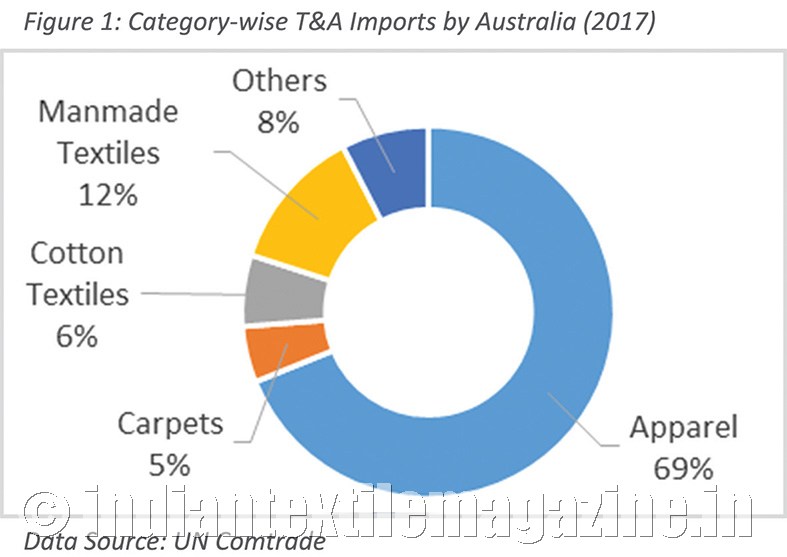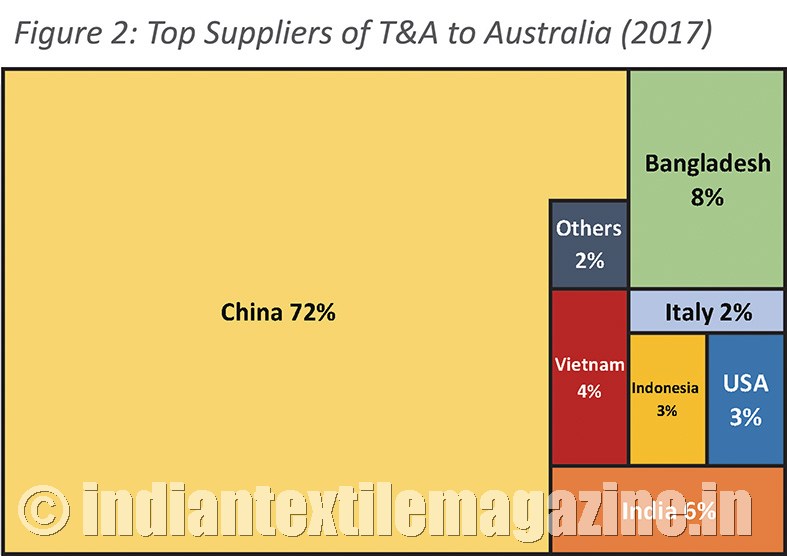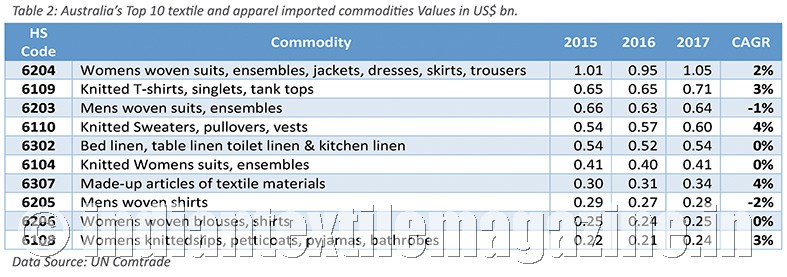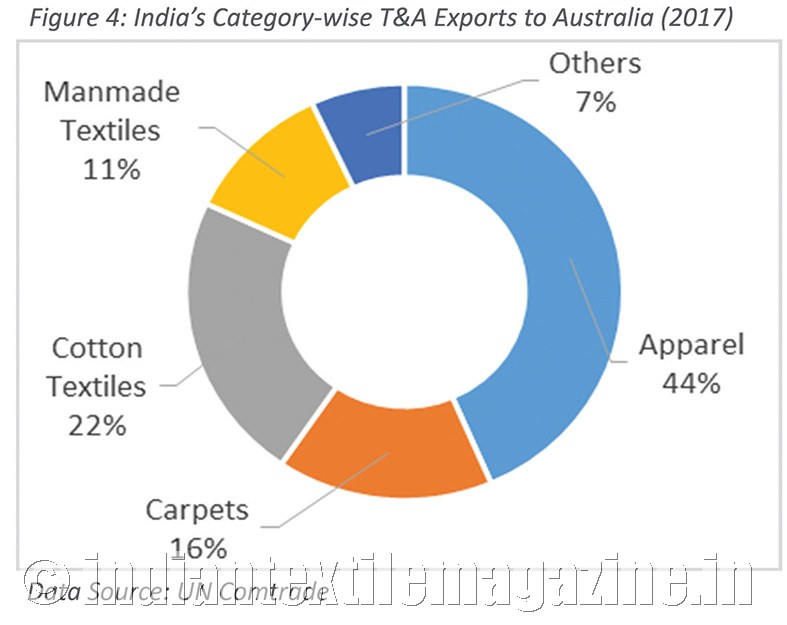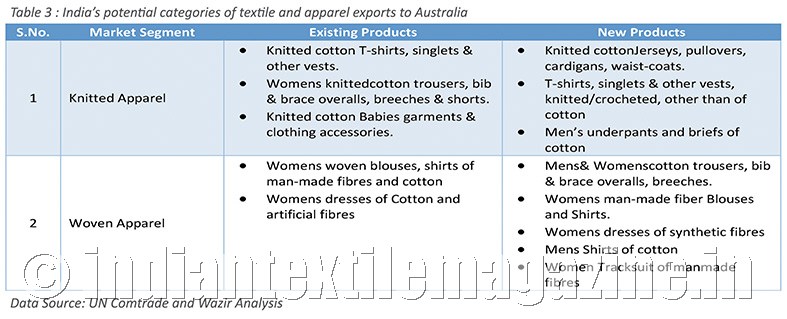Even though Australia may not feature among the top importers of textiles & apparel in the world, it still shines as the largest apparel importer in the southern hemisphere. Its T&A imports registered a measly positive growth at a CAGR of 2% over the last five years to reach $9.3 billion in 2017. Within the same period, its imports decreased at a CAGR of -2% to reach $4.9 billion in 2017. Australia’s trade balance accounted for a deficit of $-4.4 billion on average over the last five years.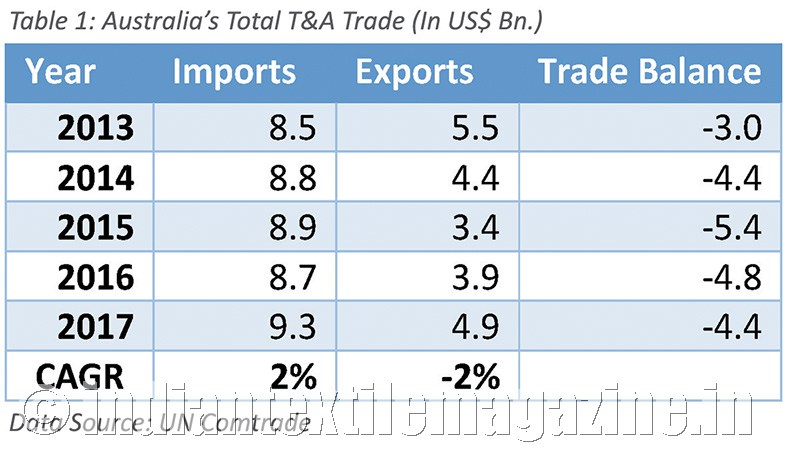
The overall Australian manufacturing industry declined across all key data items, with EBITDA, down 3.4% (-$1.2b). Thus, there is an ever-increasing demand of textile and apparel imports in Australia with jerseys, pullovers, cardigans, waist-coats & similar articles, knitted/crocheted, of man-made fibres being the largest single import commodity over the last year.
The second position is comfortably taken by cotton T-shirts. Knitted and woven apparel account for almost 69% of total imports of Australia in 2017. The top four exporters of T&A to Australia account for around 92% of the market share. Among them China shows its dominance over the rest of the world as it holds 74% share in the T&A imports among the top 10 exporters to Australia, followed distantly by Bangladesh and India at 8% and 6% respectively.
India is amongst the top three suppliers of T&A products to Australia. India’s exports of T&A to Australia stood at around $467 million in 2017 and has registered a growth at a CAGR of 7% over the last five years. Also, India’s share in total Australia’s textile and apparel imports has remained solid around 5.5%, while exports of T&A products from China have decreased marginally from 63% to 60% of the imports market share.
Apparel is the largest category exported from India to Australia, followed by cotton textiles and carpets, and accounts for 44% of T&A exports. India has a potential to export knitted Jersey, pullovers and T-shirts of man-made fibers which take up a significant amount of Australian apparel imports (11%). Also, Indian cotton textiles has a market share of 18% which is very high considering the monopoly China has in other categories.
 Australia has now become one of the leading apparel importers and has historically developed reliance on China for its major T&A imports. However, in recent years the emergence of India and Bangladesh as mass exporters has reduced China’s share marginally. India has immense potential to further increase its share in Australian textile and apparel imports with strategic planning of export commodities.
Australia has now become one of the leading apparel importers and has historically developed reliance on China for its major T&A imports. However, in recent years the emergence of India and Bangladesh as mass exporters has reduced China’s share marginally. India has immense potential to further increase its share in Australian textile and apparel imports with strategic planning of export commodities.
India exports commodities which are part of the top categories imported by Australia but the export values are not significant when compared to China. India should continue exporting commodities which in recent years have been its strength along with exploring similar options in man-made fiber apparel and textiles. It should focus on woven cotton trousers for both men and women as well as man-made fiber T-shirts, shirts and dresses in the apparel segment.
In June 2017, a memorandum of understanding (MoU) on co-operation in the textiles, clothing and fashion sectors was signed between the Indian Ministry of Textiles and the Department of Foreign Affairs and Trade, Australia. The objective of this MoU is to nurture the skills and talents, promote economic opportunities and encourage professional engagement, training, skill development and public exhibition of products. Also negotiations for a Free Trade Agreement (FTA) between India and Australia (Australia-India Comprehensive Economic Cooperation Agreement) are on, and both the countries have made progress at information exchange.
Taking into consideration the Australian trade policy, FTAs, declining domestic production and declining reliance on China, currently small markets India can play a major role in increasing their market share in Australia.
By Wazir Advisors
